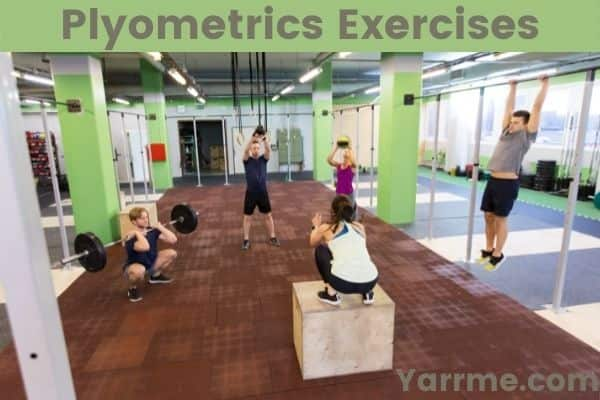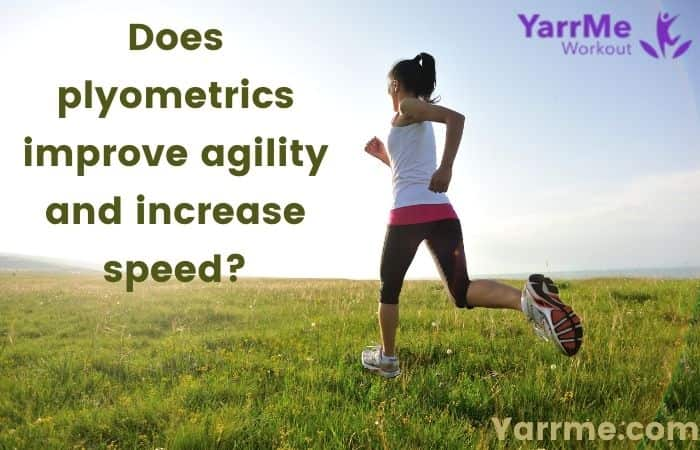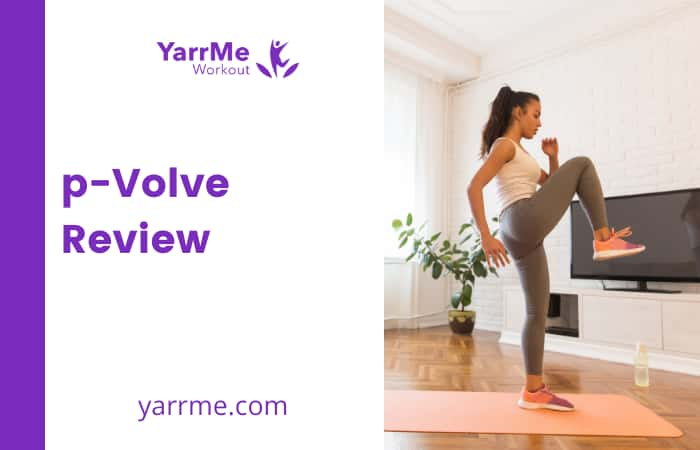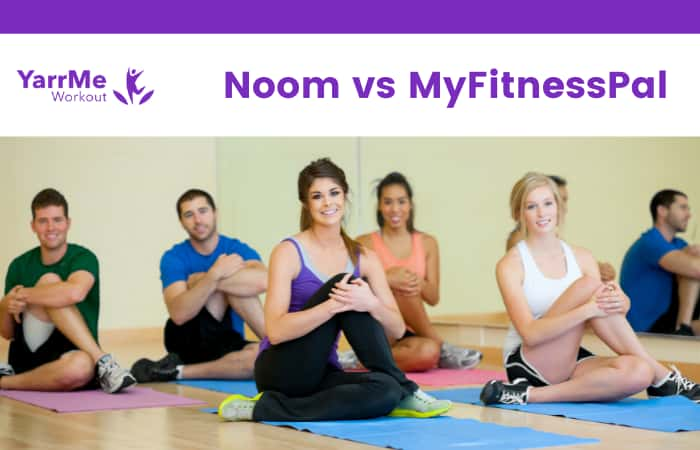Plyometrics is used to improve the speed and agility of an individual. The exercises will help you develop more muscle power, which ultimately gives you the ability to be faster and more agile. What’s important about plyometric exercise is that it’s not just for improving sports performance; it has benefits for people who need functional abilities, like military personnel and first responders.
Check out the article on P90x Plyometrics for complete schedule and exercise plans.
How Plyometrics help you in improving agility?
Here are the common factors which make plyometrics a great tool to improve agility, increase speed and run faster:
Balance
Without proper balance, plyometrics cannot be performed effectively. Keeping your weight centered over both feet will reduce the degree of injury should you slip or lose your footing. Try not to look down at first if you plan on doing anything complicated like jumping side to side or front to back. This takes a lot of practice but eventually, you will be able to focus on your surroundings without losing balance.
Explosive power
Plyometrics trains the body to produce maximal power in the shortest time possible. This is an important attribute for athletes who need to change direction quickly or sprint to the finish line.
Coordination
The body needs good coordination to successfully complete. You must be able to land with your knees bent and your weight centered over your feet in order to absorb the shock of jumping. Try landing from a standing position or from a run so that you can get the feel for it.
Core stability
If you have good balance, coordination, and explosive power, but lack core strength, you won’t be able to utilize those attributes. The core muscles play a big role in plyometrics by providing stability and preventing injuries.
Flexibility
In order to achieve maximal power, the body must be able to stretch and then quickly contract the muscle. This is why good flexibility is essential for plyometric training.
Stamina
If you are tired, your body will not be able to operate at full capacity. It is important to get the heart rate up initially but to stop before fatigue sets in.
Know when to stop
Plyometrics should only be used for short intervals of time during training and never done to failure. If you experience any pain whatsoever, discontinue use.
List of Plyometric Exercises that assist in increasing speed
Let’s look at some of the exercises which can help in improving agility and increase speed:

Plyometric box jumps:
This is a great exercise to improve your speed and agility. You will need a plyometric box or any sturdy surface that is about 18 inches high. To do this, start by standing in front of the box with your feet hip-width apart. Bend your knees and jump up onto the box, landing with both feet on top. Jump off the box and back to the start position. Repeat this for 10-12 reps.
Browse More on Plyometrics…
- Does Plyometrics Work? – No. Plyometrics are intense exercises that are there to produce power, and we shared some of the reasons why it’s not recommended as a daily workout.
- Is it okay to do Plyometrics Everyday? – No. Plyometrics are intense exercises that are there to produce power, and we shared some of the reasons why it’s not recommended as a daily workout.
- Plyometrics and Cardio are Same? – Yes! Plyometrics can be a form of cardio. They can be considered cardio if done at high intensity. To know more, checkout article.
- Plyometrics makes you bulky!!! – Plyometric training alone won’t assist you to gain muscles. We think it’s the opposite. Check out the article to find out why!!!
- Injuries with Plyometrics – It is possible but rare. These workouts are meant to be done by people who are either fit and healthy. Find out more in article.
Plyometric lunges:
This is a great exercise to improve your agility, balance and speed. Start by standing with your feet together, holding a medicine ball or weight at your chest. Step forward with one leg and lower your body toward the floor. When you are in a lunge position, jump off the ground bringing both feet together. Use your arms to help propel you up into the air so you land on both feet at the same time. Repeat this for 10-12 reps on each leg.
Weighted speed skaters:
This is a great exercise to improve your speed and agility. Start by standing with your feet together, holding a weight at your chest. Take a big step to the side with one leg and lower your body toward the floor. When you are in a skater position, jump off the ground, bringing both feet together. Use your arms to help propel you up into the air so you land on both feet at the same time. Repeat this for 10-12 reps on each leg.
Weighted speed squats:
This is a great exercise to improve your speed, balance, and agility. Start by standing with your feet shoulder-width apart. Hold the weight in front of you while standing tall with a good posture. Sit back with your hips and lower your body toward the floor. When you are in a deep squat position, jump up off the ground bringing both feet together. Use your arms to help propel you up into the air so you land on both feet at the same time. Repeat this for 10-12 reps.
Weighted calf raises:
This is a great exercise to improve your speed and agility. Start by standing with your feet hip-width apart. Hold the weight in front of you while standing tall with a good posture. Raise your heels off the ground, then lower them back down. Repeat this for 10-12 reps.
Agility ladder drills:
This is a great exercise to improve your speed and agility. Use the agility ladder by stepping in for 5-10 seconds, then moving out of it quickly. Repeat this for 30 seconds. Do two sets.
How does plyometric training improve agility and Increase speed?
Plyometric training improves agility and increases speed in a few ways. First, plyometric exercises help to develop more muscle power. This increased muscle power can help you generate more force when you move, which can make you faster and more agile. Plyometric exercises also help improve your balance and coordination, which can also improve your speed and agility. Finally, plyometric exercises are a great way to increase your overall fitness level, which can also help improve your speed and agility.
Do you need more than 3 weeks of plyometrics to see improvement in speed and agility?
No, you don’t need more than 3 weeks of plyometrics to see improvement in speed and agility. You may start to see improvements in speed and agility as soon as the first few days of plyometric training. However, to maximize your speed and agility, you should aim to do at least 3-4 weeks of plyometric training.
To get the best results, aim to do 3 days of plyometric training each week. On your off-days, it is okay to do some other type of exercise like weightlifting or team sports. Just make sure not to neglect your plyometric training altogether. This will help you see maximum improvements in speed and agility over time.

How do I know which exercises are right for me?
Some exercises are suitable for everyone, but some require restrictions. For instance, a squat might be a good exercise for people with no injuries or mobility problems that limit sitting or bending at the hips.
Squats can also be modified to accommodate all fitness levels because there are several different types of squats to choose from–deep/low squats, shallow/high squats, forward-leaning positions, and side-squats–depending on the circumstances.
Additionally, the degree of bend in your thighs (quads) can be adjusted by changing how far you stick out your front foot (heel stays in place).
Will practicing plyometrics help improve my skills in other types of sports besides running/jumping/sprinting?
Yes, plyometrics will improve your other skills. Plyometric exercises make you use muscles in ways that are completely different from anything else, and training your body to do these new movements can help make everything else easier. Athletes have made great gains in their running speed merely by doing some plyometric exercises.
Conclusion
While plyometrics can improve agility and increase speed, it should not be the only tool in your arsenal. Strength training, cardiovascular exercise and proper nutrition are all important factors in achieving success. Start with a basic plyometric routine and then add more complex exercises as you progress. Have patience and remember that Rome wasn’t built in a day.
Explore Benefits of Plyometrics…
- Become Taller with Plyometrics – No, you are not going to grow any taller by doing exercises that target your muscles. But , it can assist, checkout how?
- Build Muscles with Plyometrics – Checkout article for plyometrics exercises and benefits of it for building muscles.
- Plyometrics for Long Distance Runners – Plyometric exercises are designed to increase speed, but not for runners who are looking to add distance to their runs. Check it for more information.
- Increase Speed With Plyometrics – Plyometrics is used to improve the speed and agility of an individual. Check out the actual processes and exercises that benefit you greatly.






